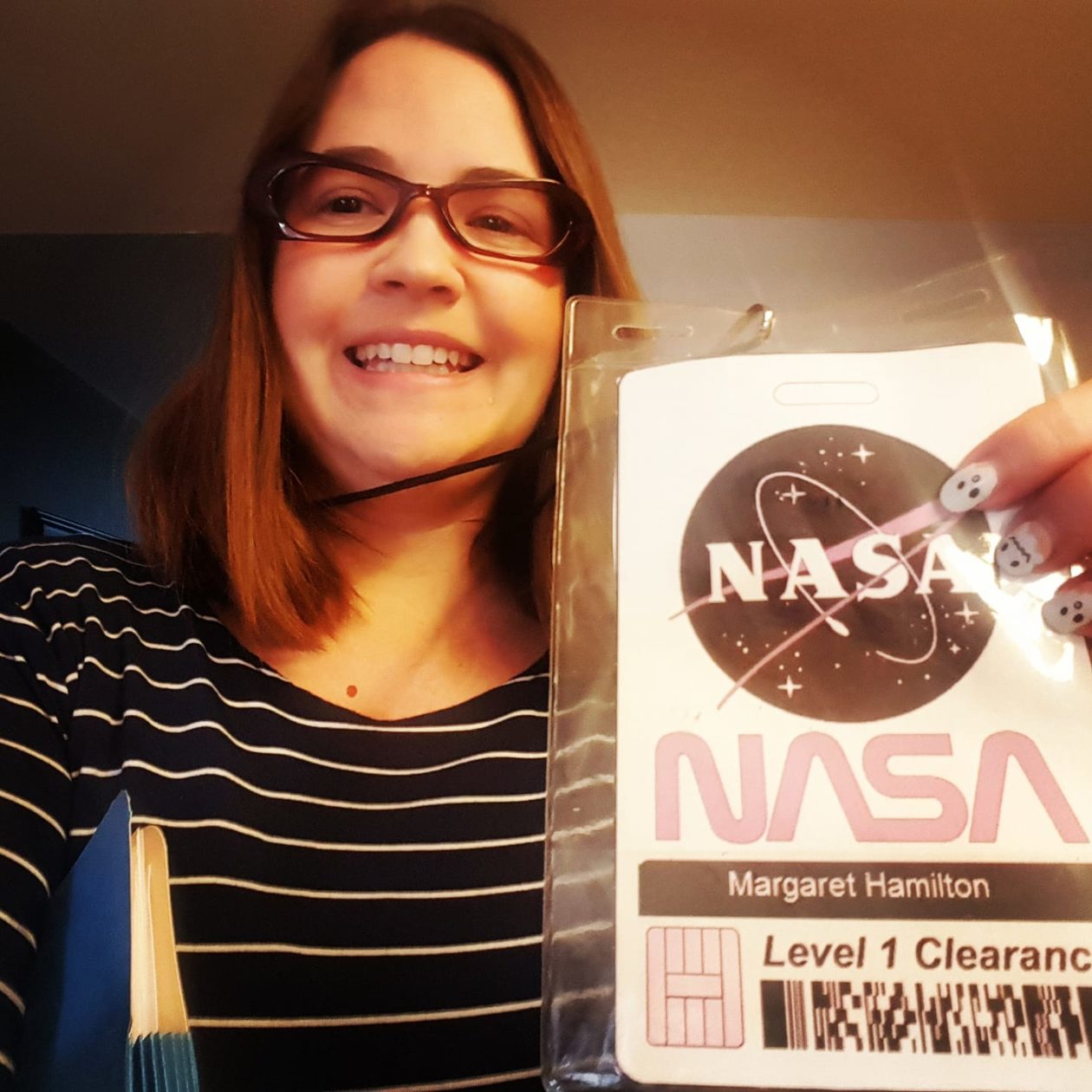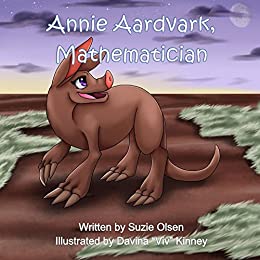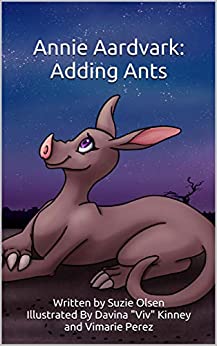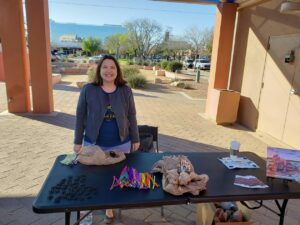
JANE BURN – POETRY AS HARD GRAFT, INSPIRATION, REACTION OR EXPERIMENT?
I interviewed poet & artist Jane Burn who won the Michael Marks Environmental Poet of the Year 2023-24 with A Thousand Miles from the Sea.


Systems engineer Suzie Olsen is a children’s author who performs various science, technology, engineering, art and math experiments with her family. Through her books and her website, Suzie aims to, “show children, especially girls and minorities, that maths is fun” and to “spark their curiosity” in both the arts and the sciences.
Leslie: Can you give examples, please, of what you do as a systems engineer? What’s exciting and challenging about this work?
Suzie: Yes, I work on the search and rescue system for the US Coast Guard. The system is large scale, meaning the system is a combination of computers, radios, and other off-the-shelf parts that are connected through a network. As an engineer on this system, I work to integrate and maintain the computers, radios, and other equipment. The US Coast Guard Service uses this system to locate boaters in distress; I can honestly say that the system I work on saves people’s lives. That is the most exciting, challenging and rewarding part about my job.
Leslie: Can you explain what STEM Spark is, please, and how it came out of your experience as a child.
Suzie: STEM Spark is a blog where my family and I perform different science, technology, engineering, art and math (STEM or STEAM) activities together as well as review and giveaway various STEM products. I’m an engineer by day, children’s author/writer at night, and mom 24/7, and STEM Spark is where I can mash mom, engineer, and writer together.
Looking back, I became an engineer mainly because of my parents. They always encouraged me in math, and they put me in an elementary school that had a STEM program before STEM became a buzzword. I also was a creative child, making up stories for my stuffed animals and dolls, which also led to me being an engineer and an author. Both engineering and writing require creativity in solving problems; just the type of problems are different.

Leslie: What first led you to be a children’s author? How have you learned your craft and how do you tailor your books to your intended audience?
Suzie: I wanted to show children, especially girls and minorities, that math is fun, so I wrote the Annie Aardvark series. I learned about writing picture books through the Society of Children’s Book Writers and Illustrators (SCBWI) and the 12×12 Challenge. Both organizations give great advice and tips on how to tailor your writing to children.

Leslie: Can you describe what sets off your writing, please?
Suzie: Someone, most likely my child, will say something that makes me think ‘there’s an idea for a picture book’, and I write the idea down. Occasionally, I’ll get an idea from watching a TV show or movie or reading an article, but usually my source of ideas come from something someone said. After I’ve written the idea down, I think about it for a few days to a few months, and then write a first draft.
Leslie: Can you give us a picture of what it’s like setting up various arts/science activities as a family, please?
Suzie: One of my family’s amusing experiences was with the Diet Coke and Mentos mints experiments. We knew from watching other people’s videos of the experiment to expect a messy explosion of Diet Coke, so I put my child in a raincoat. However, we used such a small amount of Diet Coke the first time around, about 8 oz, that it only shot about 5 cm in the air. My child was standing a meter away, so the liquid didn’t touch my child at all. The raincoat was for nothing.
Leslie: Where do you fit in amongst the group of STEM authors? How have you built up the group?
Suzie: I grew my network of authors, writers and other creators through SCBWI and the 12×12 Challenge. There’s also another good resource for children’s authors called KidLit411, and plenty more that I’m missing. I joined as a paid member of SCBWI and 12×12 Challenge and then from there joined their social media groups. Slowly I worked up the courage to ask questions or make comments in these social media groups, which eventually led to collaborations with other authors on posts for my blog. The kidlit community, as it’s referred to, is a (mostly) kind and generous community. I feel fortunate to be a part of it.
Leslie: From your experience, what are the differences and similarities between ‘arts-led’ thinking and ‘science-led’ thinking?

Suzie: From my anecdotal observations an artist can be very methodical and scientific in how they approach their work. And a scientist can be very creative and artistic in how they approach their work. But then there are some artists and some scientists who stick to the traditional ‘arts-led’ thinking and ‘science-led’ thinking. So my conclusion is that thinking (and learning) is an individual based preference, and that is why both artists and scientists should be open to the idea of STEAM (the merging of art and STEM).
I know I was resistant at first to use the term STEAM, but then I thought about how art has influenced my job as an engineer: I’ve had to draw schematics and diagrams, I’ve had to write papers and reports, and I’ve used creativity to solve problems. To give another example: Davina, the illustrator of Annie Aardvark, uses a top-down method for her drawing process and a technical software program to create the final illustrations. That means, she seeks to identify the big picture and all of its components – and that, in turn, becomes the driving force for the end goal and the fine detail.
My conclusion is, science and art merge more than I thought; we don’t have to be only one (artist) or the other (scientist). We can dabble in both.
Next week I interview I interviewed theatre/circus director Catrin Osborne about her spectacular stage adaptations of ground-breaking books.
ABOUT LESLIE TATE’S BOOKS:

I interviewed poet & artist Jane Burn who won the Michael Marks Environmental Poet of the Year 2023-24 with A Thousand Miles from the Sea.

I interviewed ex-broadcaster and poet Polly Oliver about oral and visual poetry, her compositional methods, and learning the Welsh language. Polly says, “I absolutely love

I interviewed Jo Howell who says about herself: “I’ve been a professional photographic artist since I left Uni in 2009. I am a cyanotype specialist.


Poet Tracey Rhys, writer of Teaching a Bird to Sing and winner of the Poetry Archive’s video competition reviews Ways To Be Equally Human. Tracey,
| Cookie | Duration | Description |
|---|---|---|
| cookielawinfo-checkbox-analytics | 11 months | This cookie is set by GDPR Cookie Consent plugin. The cookie is used to store the user consent for the cookies in the category "Analytics". |
| cookielawinfo-checkbox-functional | 11 months | The cookie is set by GDPR cookie consent to record the user consent for the cookies in the category "Functional". |
| cookielawinfo-checkbox-necessary | 11 months | This cookie is set by GDPR Cookie Consent plugin. The cookies is used to store the user consent for the cookies in the category "Necessary". |
| cookielawinfo-checkbox-others | 11 months | This cookie is set by GDPR Cookie Consent plugin. The cookie is used to store the user consent for the cookies in the category "Other. |
| cookielawinfo-checkbox-performance | 11 months | This cookie is set by GDPR Cookie Consent plugin. The cookie is used to store the user consent for the cookies in the category "Performance". |
| viewed_cookie_policy | 11 months | The cookie is set by the GDPR Cookie Consent plugin and is used to store whether or not user has consented to the use of cookies. It does not store any personal data. |